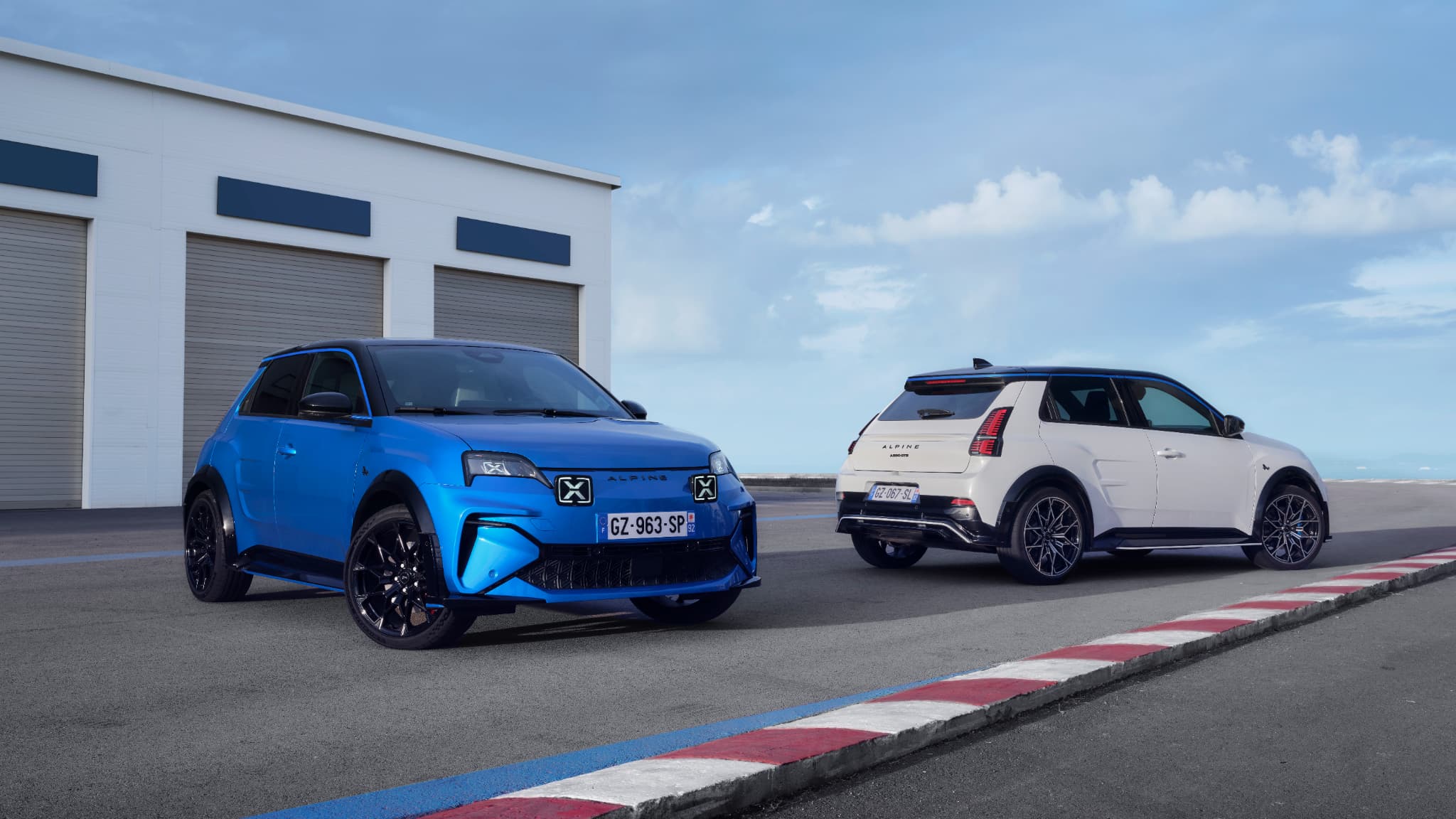Alpine is making its big leap into electric vehicles. Its A290, a variation of the latest Renault 5 and second model since the rebirth of the Dieppe brand in 2017, debuts on a new page in its history.
A first member of the Alpine “dream garage”
In fact, this electric motor represents its near future. In fact, three models should constitute your “dream garage” within three years. A “dream garage” with this little A290 that sets the ball rolling. Then it will be the turn of its A390, its first SUV (or rather its “sport fastback”, the term Alpine prefers), discovered in conceptual form at the last Paris Motor Show. The production version should be presented in 2025 with a launch planned for the following year. Finally, it will be the turn of the A110 coupe to undergo its electrical transformation, between now and 2027.
In the meantime, it is up to this A290 to start this rapid transition to electric.
We will quickly move on to the design, already widely analyzed since the presentation of the model last June. Although the silhouette is necessarily close to that of its cousin the R5, this A290 is clearly differentiated with this front panel that takes up the signature of the A110 with four optics.
This original lighting signature also pays tribute to the world of rallying with these crosses that evoke adhesive tape to prevent it from breaking in the event of impact.

At the height of the rear doors, the body design evokes the R5 Turbo, all of them with 19-inch wheels as standard (the R5 is equipped with 18-inch wheels in the high-end versions of the launch).
Finally, at the rear, the black stripe above the Alpine lettering gives a ducktail look, while the diffuser gives a hint of the machine’s sportiness.
A (very) original steering wheel.
Inside, although special care has been taken in the choice of materials and some details, the resemblance to the interior of the R5 is even more evident than on the outside. And all the better, because the overall architecture with the dual screens and the Google suite, which here benefits from an Alpine overlay, currently serves as a reference. We are also pleased to find the “My Safety” button that allows access to preferred settings with two clicks… and, for example, the deactivation of alerts that are now mandatory at every start, such as the one linked to speeding.
In this redesigned interior, however, Alpine had the good taste to bring its own steering wheel, inspired by F1. Two small buttons are added, one blue and one red, compared to the R5. We’ll talk about it again as we drive.
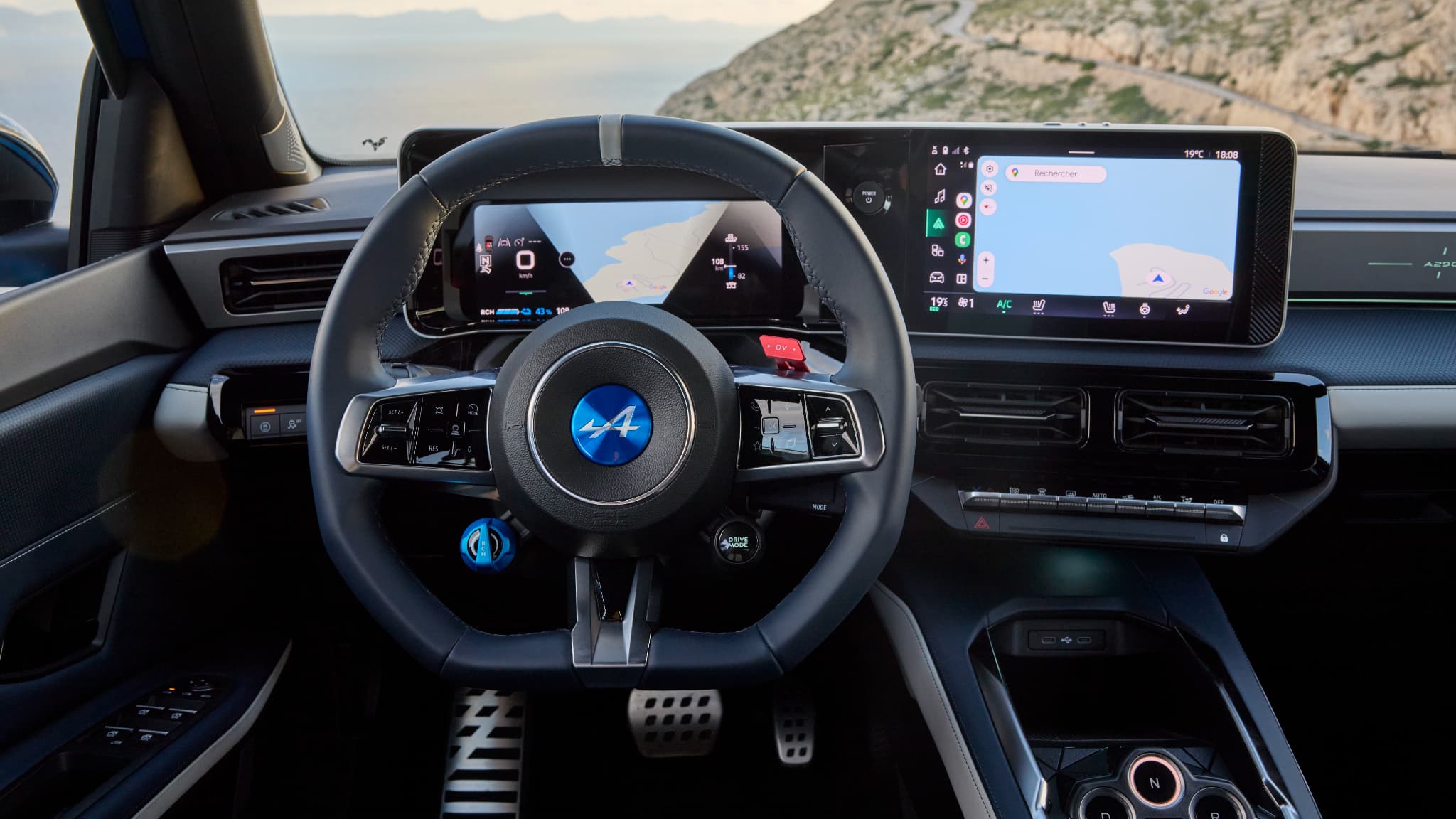
Another notable difference is the D, N and R gearshifts located on the center console, like on the A110. There is also less strain on the back of the steering wheel, as in the R5 there is a third switch on the right for starting, shifting into reverse or neutral.
A smile behind the wheel, but mixed feelings
A few weeks after testing the R5, we were eager to get behind the wheel of this A290.
On paper, we expected a significant increase in performance, with the same 52 kWh battery as in the R5, but associated with a much more powerful engine, 180 horsepower at the entry level and 220 horsepower for the second trim level.” GT”. ” and our test models in high-end “GTS” finish.
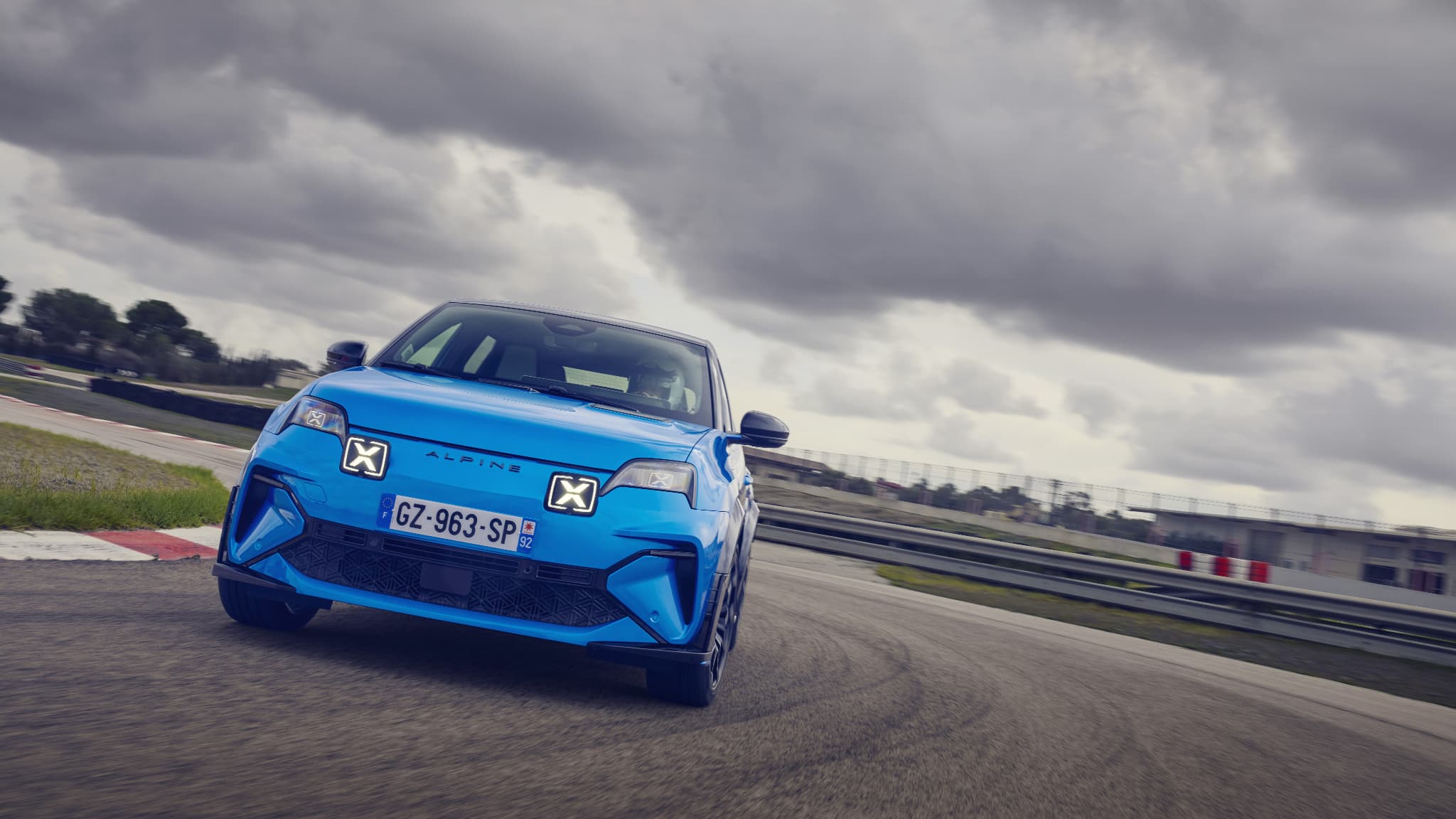
In our test version, Alpine announces an acceleration from 0 to 100 km/h in 6.4 seconds, that is, 1.6 seconds better than the official time indicated for the R5. The Dieppe brand insists on maintaining this level of performance throughout the battery’s operating range, with only 3 tenths lost at 20% battery, and 0 to 100 km/h announced in 6.7 seconds under these conditions.
An indirect attack on Tesla, which is often criticized for losing power as the battery runs out. Porsche also insisted on this point when launching its Taycan.
In fact, this A290 is much more dynamic than the R5, but we were clearly hungry for acceleration to squeeze you into your seat. Our timed 0-100km/h track attempt, with 50% battery, resulted in an embarrassing time of 7.4 seconds. That’s less than the advertised time for a given Abarth 500e, one of the rare direct competitors of this A290 in the emerging category of small electric sports cars.
But the A290 makes up for it perfectly with its exemplary handling. Among the ingredients to adapt Renault’s recipe, Alpine completely reworked the chassis compared to the R5, added a suspension system with hydraulic stop, recovered the brakes from the A110 and developed specific tires with Michelin.
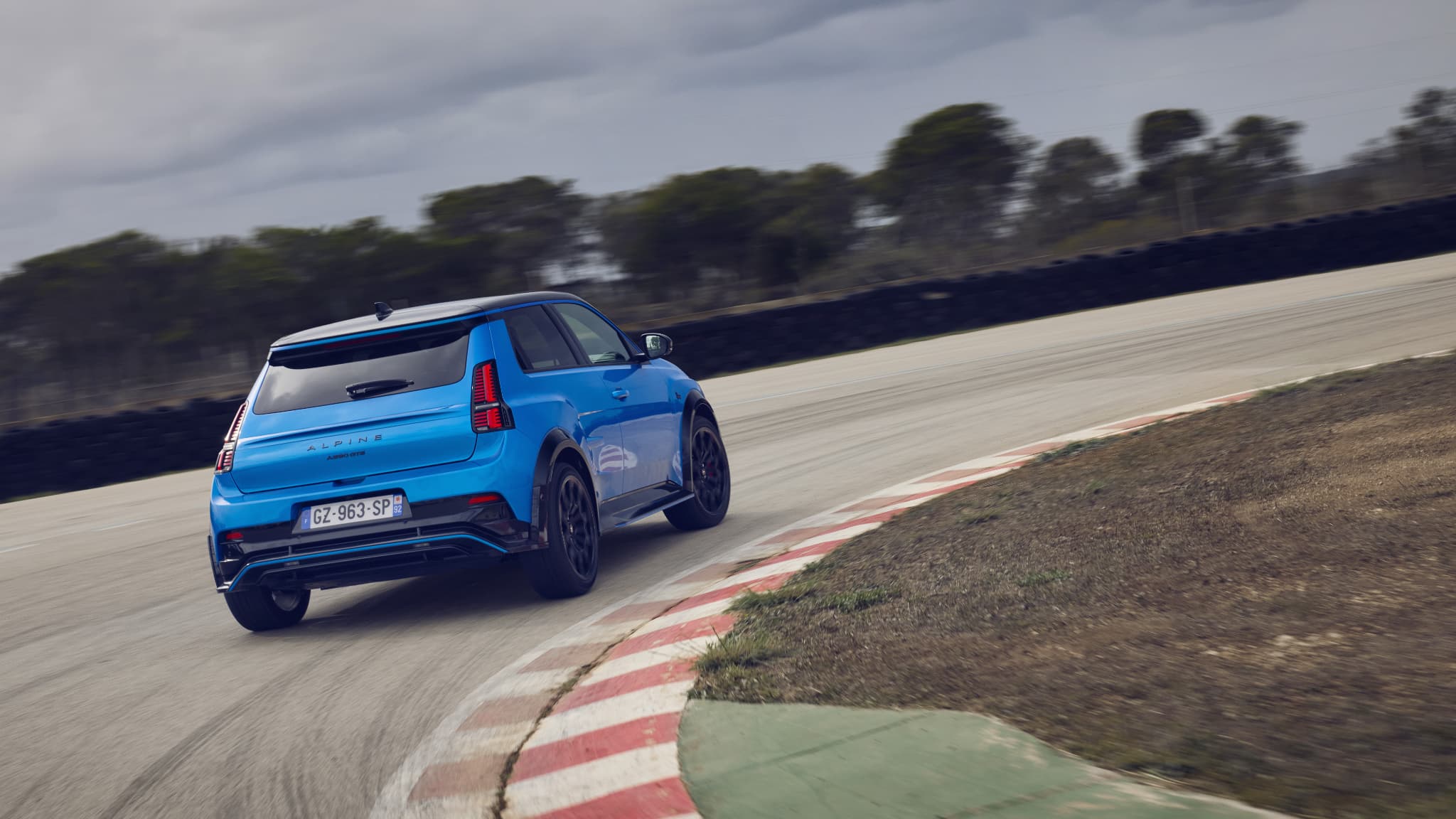
On the small, winding roads of the Spanish island of Mallorca, where these tests took place, and even more so on the circuit, this A290 is especially pleasant to drive. The curves follow one another fluidly and the behavior is very healthy: even looking for the limits of the vehicle and without being a very experienced driver, you have fun and never feel in danger, not even with the traction control, the ‘ESP’. , disabled.
Alpine thus assumes its proposal: this A290 stands out as a dynamic city car, but not as a sports car. There is no need to look for a comparison with an A110, which does not need to carry 300 kg of battery. This is the announced weight for this essential element in an electric car, with a total on the scale of 1,479 kg, or 339 kg more than an A110.
Red button and Gran Turismo challenges
In a sometimes overly sanitized automotive world, Alpine makes decisions bold enough to bring a touch of modern madness to its city car.
The small blue dial on the steering wheel, marked RCH, allows you to adjust the level of regenerative braking in 4 levels, from a fairly steep idle when you release the accelerator pedal to a free coast. In a nice nod once again to the A110, level 1 reproduces the engine braking of the two-seater coupe.
We found the mode change button (sport, eco, normal and personal) like on the R5, but it’s the red “OV” button (for “forward”) that intrigued us a lot.
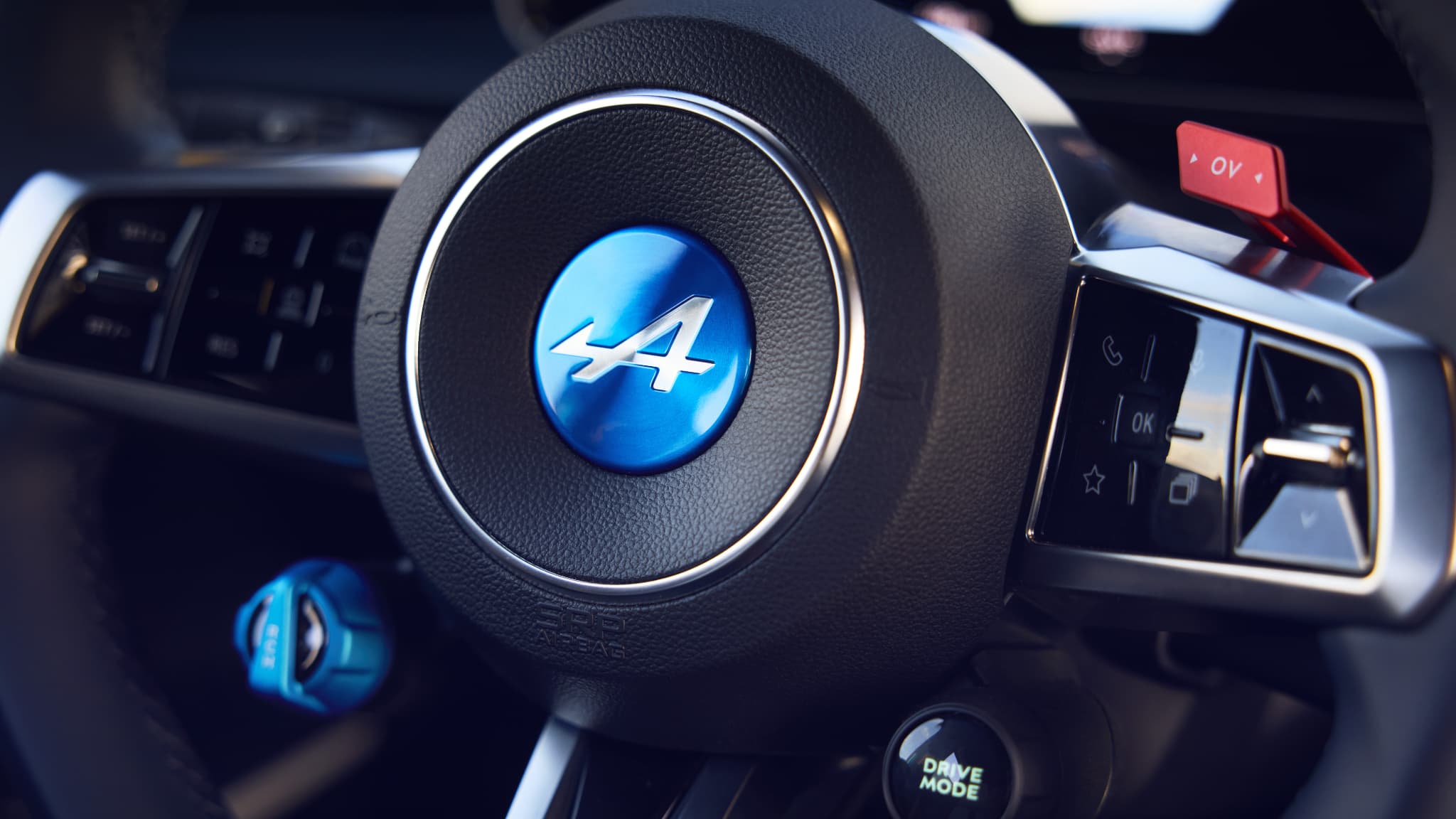
Contrary to what you might expect, it has nothing to do with a “Sport Response” button found on some Porsches that offers a temporary 10-second boost.
Here, this red “OV” button will play a full pedal press… when you’re already pressing the accelerator. A way to avoid involuntary support that would send you against the wall. The sensation is still quite surprising and the first to accelerate… with the right thumb. The process is difficult to understand: if you are already pressing the pedal, you only have to press it to get the same effect. But, after all, why not: don’t we say “useless and therefore essential”?
This “OV” button also comes into play in the “launch control” starting procedure, the start from a standstill. The on-screen animation of the counters, with scrolling triangles, and the activated sound environment have little effect.
Therefore, Alpine is taking its efforts quite far to attract the younger generations. In the menus, in addition to the classic performance measurements on the track (lateral G, graphs with acceleration and braking, fuel consumption, etc.), we find a “coaching” menu with various tips to better master driving on the track, with advice from the pilot. Original and very well seen.

More daring, you can also access challenges in Gran Turismo, the famous car racing video game franchise.
In the power category, for example, you will be required to go from 0 to 100 km/h in less than 7 seconds to win a bronze medal, less than 6.7 seconds for silver and less than 6.4 seconds for the gold medal. It was this challenge that gave us the opportunity to try “launch control” on the circuit… And fail miserably by not winning any medals. That will be for next time.
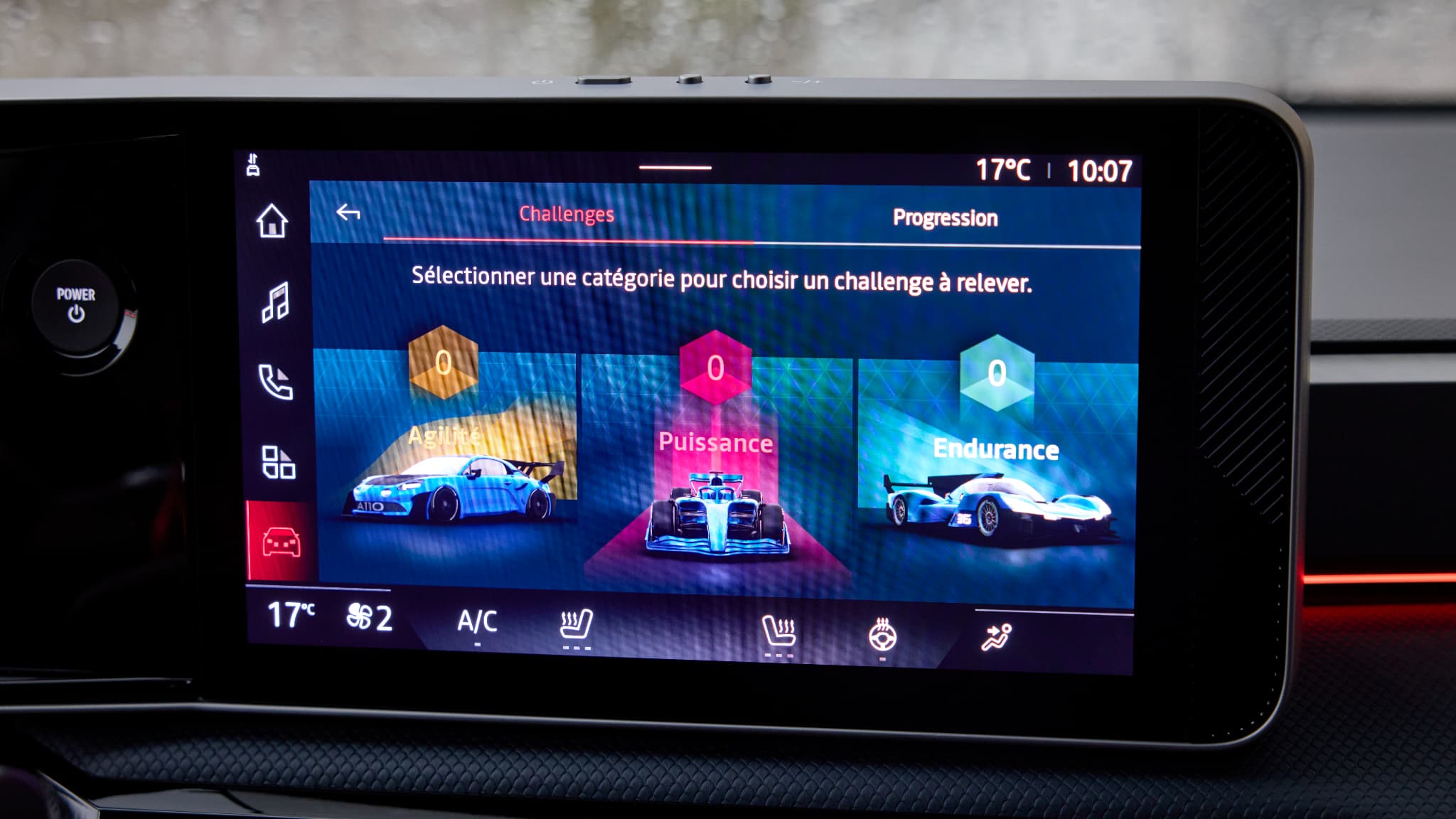
The endurance category, for its part, presents a consumption challenge: to win gold, it is necessary to consume less than 8 kWh to travel 50 km in 60 minutes. We have not won knowing that on the circuits we have not really adopted ecological driving, with consumption that reaches the maximum bandwidth, that is, 60 kWh per 100 km.
An extreme situation: on a daily basis and on the open road, Alpine announces around 360 km of autonomy. As for charging, we are left with performance equivalent to the R5: 3h20 to go from 10 to 80% on an 11 kW alternating current terminal. And 30 minutes to go from 15% to 80% on a 100 kW direct current terminal. The A290 can also benefit from bi-directional charging with the V2G standard.
At what price?
The central point of the success of this A290 “made in Douai”, like the R5, is its price. Prices start at 34,500 euros (2024 bonus of 4,000 euros deducted). The entry level of this A290 thus replaces an R5 “Esprit Alpine”, being presented at a higher price than the “Iconiq 5” version (bonus of 31,490 euros deducted), which represents the top of the range of the new generation city . diamond car.
For our test model, we must have a price of 43,000 euros, with some options to add to the base price of the GTS version, 40,700 euros.
Prices that may seem very high for a city car, even a dynamic one, but that remain in line with those of the competition: the Abarth 500e starts, for example, at 36,900 euros, a Mini Cooper SE (218 horses, 400 km of autonomy ) at 34,450 euros. .
Finally, although this model does not belong at all to the same category, we can see that the price of our test model is close to that of a Tesla Model 3 Grande Autonomie… a large sedan with 702 km of autonomy, a 0 A 100 km/h is announced in 5.2 seconds, for 44,990 euros, not counting bonuses, since it does not benefit from them.
Source: BFM TV


